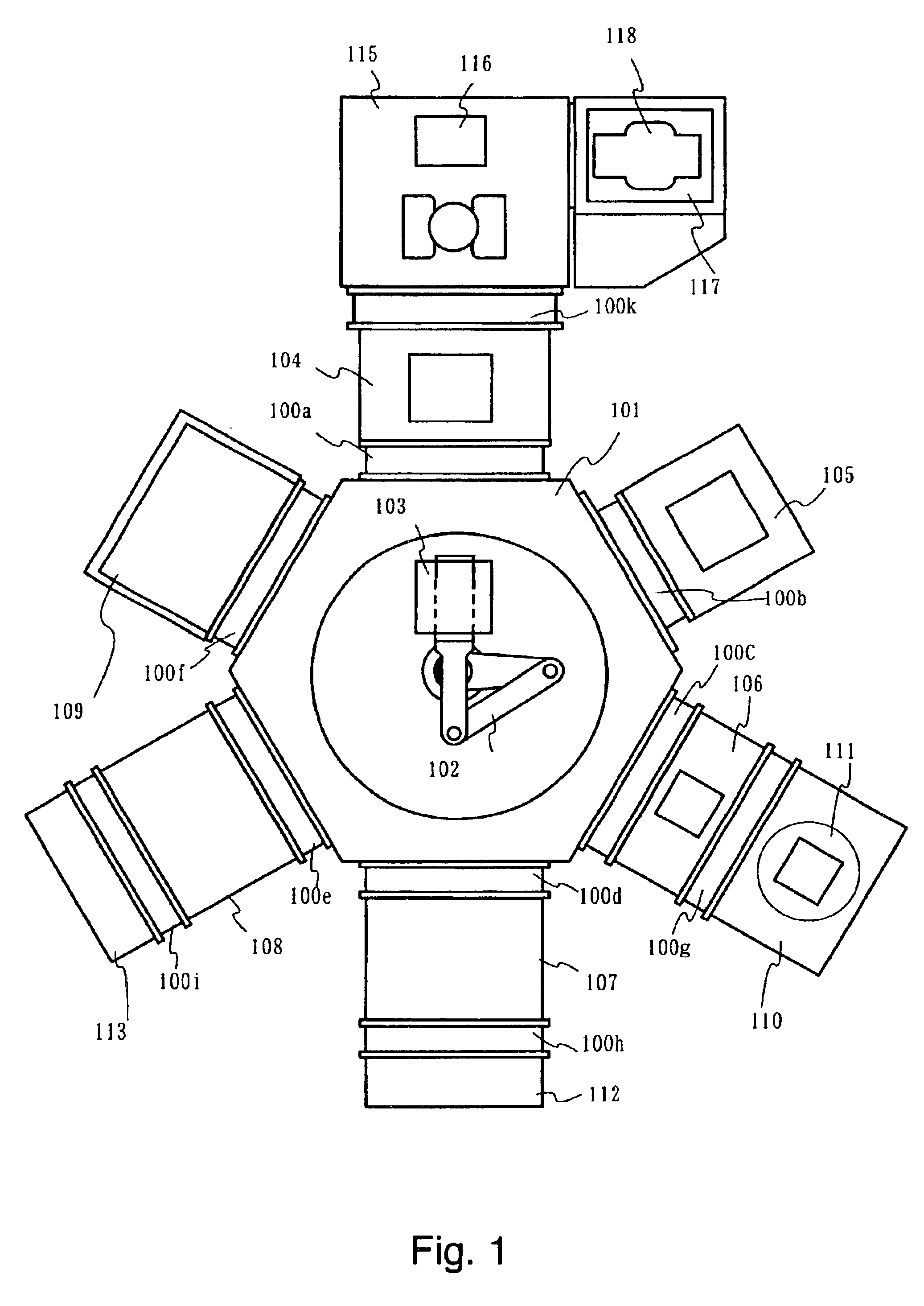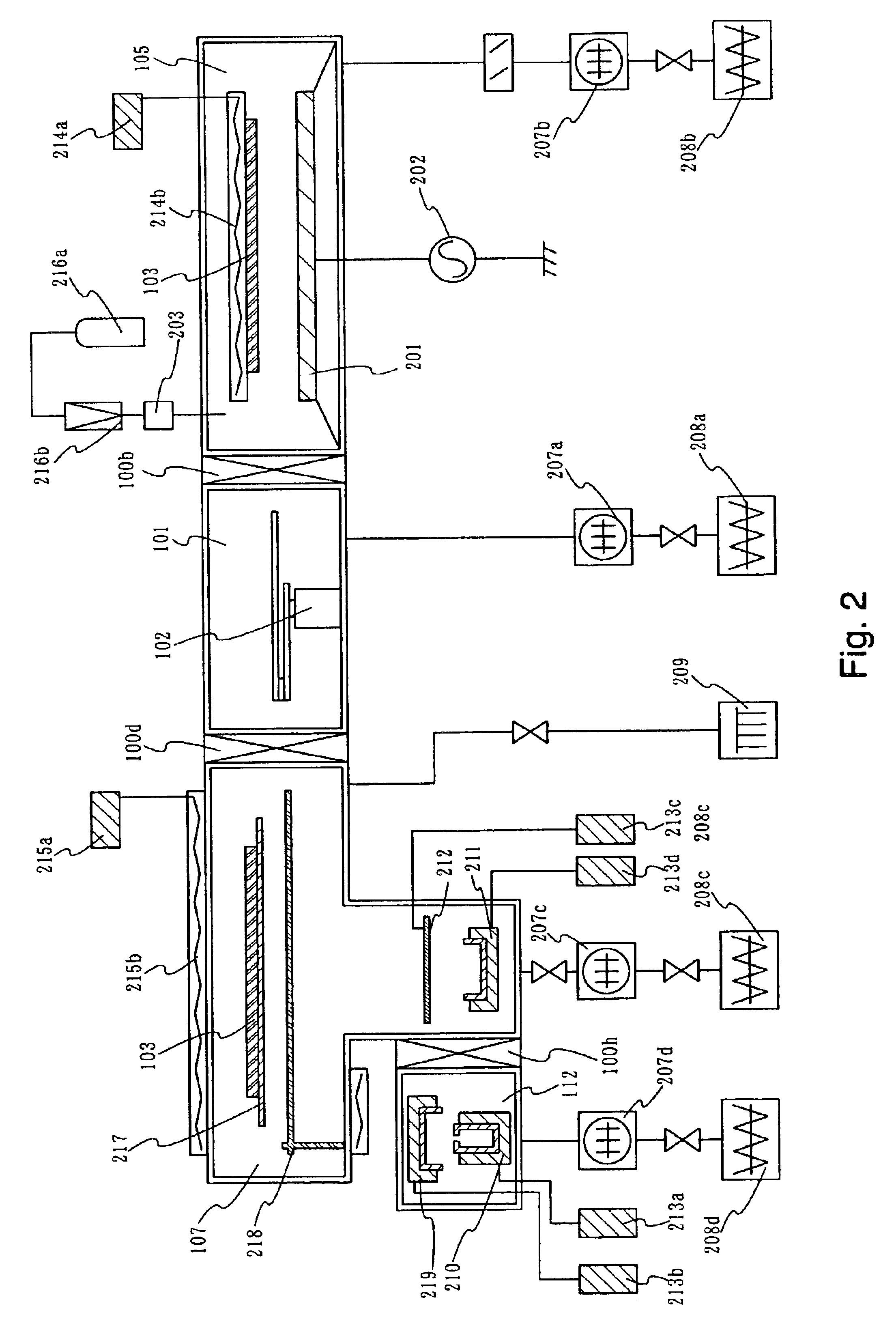Light emitting device
a light-emitting device and light-emitting technology, applied in thermoelectric devices, sustainable manufacturing/processing, final product manufacturing, etc., can solve the problems of small angle of view, degradation phenomena, impede the utilization of electroluminescence, etc., and achieve the effect of increasing the reliability of light-emitting devices
- Summary
- Abstract
- Description
- Claims
- Application Information
AI Technical Summary
Benefits of technology
Problems solved by technology
Method used
Image
Examples
Embodiment Construction
Embodiment Mode
An example of an apparatus for manufacturing a light emitting device capable of reducing the concentration of impurities contained in organic compounds, such as oxygen and moisture, is explained using FIG. 1. FIG. 1 shows an apparatus for performing film formation and sealing of layers made from organic compounds and a cathode. A conveyor chamber 101 is coupled to a loading chamber 104, a preprocessing chamber 105, an intermediate chamber 106, a film formation chamber(A) 107, a film formation chamber (B) 108, and a film formation chamber (C) 109 through gates 100a to 100f. The preprocessing chamber 105 is provided with the aim of dehydrogenation of processing substrates, degasification processing, and improving surface quality, and heat treatment processing within a vacuum or plasma processing using an inert gas becomes possible.
The film formation chamber (A) 107 is a processing chamber mainly for forming a film made from a low molecular weight organic compound by eva...
PUM
| Property | Measurement | Unit |
|---|---|---|
| speed | aaaaa | aaaaa |
| work function | aaaaa | aaaaa |
| quantum efficiency | aaaaa | aaaaa |
Abstract
Description
Claims
Application Information
 Login to View More
Login to View More - R&D
- Intellectual Property
- Life Sciences
- Materials
- Tech Scout
- Unparalleled Data Quality
- Higher Quality Content
- 60% Fewer Hallucinations
Browse by: Latest US Patents, China's latest patents, Technical Efficacy Thesaurus, Application Domain, Technology Topic, Popular Technical Reports.
© 2025 PatSnap. All rights reserved.Legal|Privacy policy|Modern Slavery Act Transparency Statement|Sitemap|About US| Contact US: help@patsnap.com



